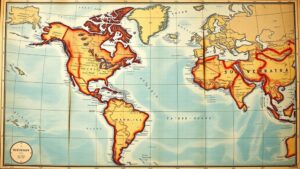Using Bathymetric Maps to Identify Potential Shipwreck Locations
Using Bathymetric Maps to Identify Potential Shipwreck Locations
Bathymetric maps, which depict the underwater topography of ocean or lake floors, serve as crucial tools in marine archaeology and shipwreck identification. By analyzing these maps, researchers can uncover possible shipwreck sites, offering insights into historical maritime activities, trade routes, and naval engagements.
Understanding Bathymetric Mapping
Bathymetric maps are created using methods such as sonar mapping, satellite altimetry, and underwater photography. These techniques allow scientists to measure the depth of water bodies and create detailed representations of underwater features. For example, sonar mapping, also known as acoustic surveying, involves emitting sound waves from a vessel and measuring the time it takes for the echoes to return, thereby determining the depth and structure of the seafloor.
Historical Context of Shipwrecks
The history of maritime travel is punctuated by numerous shipwrecks, often resulting from environmental conditions, navigational errors, or military conflicts. The oceans are estimated to house anywhere from three to four million shipwrecks, many of which remain undiscovered. Bathymetric maps have played a vital role in locating these wrecks. For example, the famous wreck of the Titanic was found in 1985 by a team led by Dr. Robert Ballard, utilizing bathymetric data to narrow down the search area significantly.
Methodologies for Identifying Shipwrecks
Using bathymetric maps to identify shipwrecks involves a systematic approach that includes the following methodologies:
- Analysis of Anomalies: Bathymetric maps can reveal anomalies such as unexpected shallows, mounds, or trench-like formations that may indicate the presence of a shipwreck.
- Historical Research: Understanding the historical context of maritime traffic in a specific area aids in triangulating likely locations for shipwrecks-for example, the waters around the Scilly Isles are known for high shipwreck frequency during the 18th century due to dangerous currents.
- Integration of Multispectral Data: Additional data sources, including satellite imagery and marine environmental data, can complement bathymetric maps. Combining these datasets enhances the accuracy of potential wreck sites.
Case Studies of Successful Shipwreck Discoveries
Several notable discoveries exemplify the effectiveness of using bathymetric maps in locating shipwrecks:
- USS Arizona – WWII: The USS Arizona, a battleship sunk during the Pearl Harbor attack on December 7, 1941, was located and studied extensively using bathymetric mapping to understand underwater currents and sedimentation patterns.
- SS Waratah – 1909: The SS Waratah vanished off the coast of South Africa under mysterious circumstances. A targeted search utilizing detailed bathymetric data led to the discovery of potential debris fields near False Bay in 2008.
- Spanish Galleon Atocha: The wreck of the Spanish galleon Atocha, which sank in 1622 off the Florida Keys, was found in 1985 in a targeted search area defined by bathymetric anomalies that indicated the likely location of the wreck.
Challenges in Shipwreck Identification
Despite the advantages of using bathymetric maps, challenges persist. Factors such as changing sea levels, sedimentation, and anthropogenic activities like dredging can obscure shipwrecks and alter their locations. Also, the sheer volume of bathymetric data requires robust data analysis techniques and expertise in marine archaeology. This complexity necessitates collaboration between oceanographers, maritime historians, and archaeologists.
Future Directions and Technologies
The future of using bathymetric maps in marine archaeology is promising, especially with the advancement of technology. Instruments such as Autonomous Underwater Vehicles (AUVs) and remotely operated vehicles (ROVs) employed to enhance data collection and analysis. Plus, the integration of artificial intelligence and machine learning algorithms can automate the identification of potential wrecks in vast datasets, significantly increasing efficiency and accuracy.
Conclusion
Bathymetric maps have emerged as invaluable resources for identifying potential shipwreck locations. combination of historical context and advanced mapping technologies opens new avenues for uncovering maritime history. As researchers continue to refine their methodologies, the prospects for discovering and preserving submerged cultural heritage will expand, providing deeper insights into our collective past.
Actionable Takeaways:
- Engage with historical maritime records to enhance the understanding of shipwreck patterns.
- Adopt advanced technologies in conjunction with bathymetric maps for more effective searches.
- Foster collaborative efforts between marine scientists and archaeologists to maximize discovery potential.


